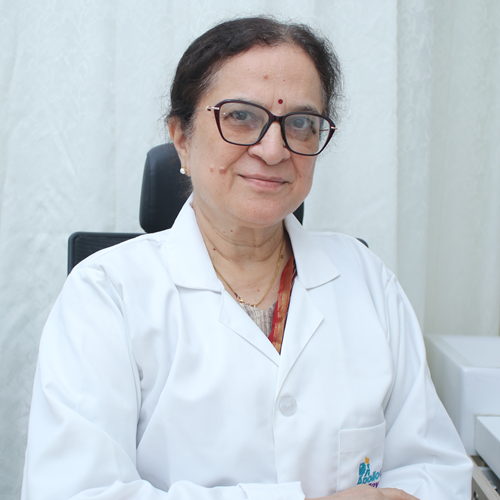What is Minimal Invasive Surgery or Laparoscopic Surgery?
Laparoscopic surgery, also known as minimal invasive surgery (MIS), is a modern surgical technique in which operations are performed through small incisions without the need for large abdominal incisions. Laparoscopic surgery is associated with less pain and quicker recovery times compared to traditional open surgery.
Laparoscopic surgery is performed using a laparoscope, a long, thin tube with a light and camera at one end. The camera is used to provide a magnified view of the operative site, and the light is used to illuminate the area. The laparoscope is inserted through a small incision in the abdomen and is passed through the abdominal cavity until it reaches the desired surgical site.
What are some of the major features of Minimal Invasive Surgery?
Minimal-invasive surgery (MIS) is a type of surgical procedure that uses smaller incisions, specialized instruments, and advanced imaging techniques to perform surgery. MIS is typically associated with shorter hospital stays, less post-operative pain, and faster recovery times for patients.
The main features of Laparoscopic Surgery include:
- Smaller Incisions:
MIS requires smaller incisions than traditional surgery, which can reduce the risk of infection and recovery time.
- Specialized Instruments:
MIS requires specialized instruments such as laparoscopes or robotic arms to access the area being operated on.
- Advanced Imaging Techniques:
MIS utilizes advanced imaging techniques such as ultrasound, MRI, and CT scans to provide detailed visualization of the surgical site, allowing surgeons to perform the surgery with greater precision and accuracy.
- Less Pain and Faster Recovery:
MIS typically causes less post-operative pain and allows for quicker recovery times for patients.
- Lower Risk of Complications:
MIS reduces the risk of complications associated with traditional surgeries, such as bleeding, infection, and organ damage.
What are the types of procedures that can be performed using Minimal Invasive Surgery?
Laparoscopic surgery is a minimally invasive surgical technique that uses small incisions and specialized instruments to perform a variety of operations. It is often used in gynaecological, abdominal, and general surgery.
The most common procedures that are performed using laparoscopic surgery include:
- Appendectomy:
This procedure is used to remove the appendix, which is a small organ in the lower right abdomen.
- Cholecystectomy:
This procedure is used to remove the gallbladder, which is a small organ in the upper right abdomen.
- Hernia Repair:
This procedure is used to repair hernias, which are tears in the wall of the abdomen that can cause pain and other symptoms.
- Hysterectomy:
This procedure is used to remove the uterus, which is the organ that holds a woman’s reproductive organs.
- Gastric Banding:
This procedure is used to place a band around the stomach to help with weight loss.
- Gastrectomy:
This procedure is used to remove part of the stomach, which is used to treat conditions such as stomach cancer and ulcers.
- Splenectomy:
This procedure is used to remove the spleen, which is an organ in the upper left abdomen that helps fight infections.
- Ovarian Cystectomy:
This procedure is used to remove ovarian cysts, which are fluid-filled sacs that can cause pain and other symptoms.
What are the major benefits of Minimal Invasive Surgery?
Minimal-invasive surgery is a type of surgery that uses special instruments to perform surgical procedures while limiting the size and number of incisions made. MIS is becoming increasingly popular due to its many benefits over traditional open surgery, including:
- Reduced Risk of Complications:
MIS is typically associated with fewer post-operative complications due to the smaller incisions made. In general, smaller incisions cause less physical trauma to the body and can decrease the risk of infection, bleeding, and other complications.
- Shorter Recovery Time:
MIS is associated with shorter hospital stays and faster recovery times. Patients often experience less pain and can return to their normal activities sooner.
- Improved Cosmetic Results:
MIS typically leaves fewer visible scars and preserves surrounding tissues which can result in improved cosmetic results.
- Cost Savings:
Laparoscopic Surgery is associated with lower costs due to shorter hospital stays and fewer post-operative complications.
MIS is a safe and effective alternative to traditional open surgery, providing numerous benefits for patients. As such, it is becoming more widely used in many areas of medicine.
How is Laparoscopic Surgery different from traditional surgery?
Laparoscopic surgery is a minimally invasive procedure in which the surgeon operates through a few small incisions, instead of a large open incision. This type of surgery has several advantages over traditional surgery.
First, the smaller incisions associated with laparoscopic surgery result in less tissue damage, lower risk of infection, less postoperative pain and fewer complications than traditional surgery. Additionally, the smaller incisions allow the patient to heal faster and return to daily activities sooner.
In addition, minimally invasive surgery allows the surgeon to use specialized instruments that allow for more precise and controlled movements than in traditional surgery. This improved control can result in a more accurate diagnosis and more successful treatment.
Moreover, laparoscopic surgery is less invasive and less disruptive to the surrounding tissue and organs. This improved visualization can help the surgeon avoid damaging nearby organs and structures.
Finally, laparoscopic surgery can also reduce the risk of complications associated with traditional surgery, such as hernias and adhesions.
Conclusion
Minimal Invasive or Laparoscopic surgery is a great way to reduce scarring, pain, and recovery time. However, it is always best to consult medical professionals before undergoing any type of surgery. They will be able to help you determine if this surgery is right for you and guide you through the process.
Request an appointment at Apollo Cradle, DELHI-NCR - Chirag Enclave. Call 1860-500-4424 to book an appointment.
Laparoscopic surgery, also known as minimally invasive surgery, is a type of surgery that uses small incisions, a camera and specialized instruments to perform the procedure. This type of surgery is less invasive than traditional open surgery and is used to treat a variety of conditions, including hernias, gallstones, and endometriosis.
There are several types of laparoscopic surgery, including laparoscopic cholecystectomy, laparoscopic appendectomy, laparoscopic hernia repair, and laparoscopic hysterectomy.
The benefits of laparoscopic surgery include less pain and scarring, shorter recovery time, lower risk of infection and complications, and improved cosmetic outcomes.
The length of the procedure depends on the type of procedure being performed. Generally, laparoscopic surgery takes between 30 minutes and 2 hours.
Yes, laparoscopic surgery is generally considered to be safe and effective. As with any type of surgery, there is a risk of complications, but these risks are minimized with the use of modern technology and experienced surgeons.

 95% Patient Satisfaction Score
95% Patient Satisfaction Score




.webp)




.webp)













